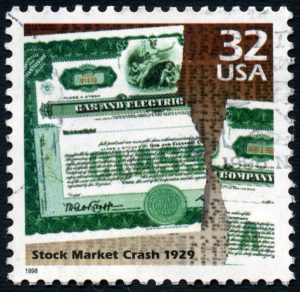Three Things You Didn’t Know About The Crash Of 1929
The comments below are an edited and abridged synopsis of an article by Simon Black
1. Stocks are more overvalued today than they were in 1929.
2. Stocks fell by nearly 90% in 1929, and it took decades to recover.
3. Adjusted for inflation, stocks have returned just 1.7% per year since 1929.

It’s best to think long-term about any investment. Businesses take time to grow and expand, and patient investors who understand this tend to do well. But when thinking about the long term, it’s imperative to consider the effects of inflation.
Every year, your money loses around 2% of its value. Over time, inflation takes a major chunk of your investment gains.
Consider that the US dollar has lost 94% of its value since 1929, so even though the Dow is more than 70x higher than it was in mid-1929, when you consider the effects of inflation, stocks are only about 5x higher over the past 90 years.
That is an average annualized return of just 1.7%.
Even over the past 20 years, if you go back to late 1999, the stock market has only returned about 2.2% per year when adjusted for inflation.
Think about all the risks and wild market swings that investors have had to deal with over the past 20 years, all for a measly 2.2%.
It’s interesting to note that, when adjusted for inflation, gold has outperformed stocks over the long run. But, unlike stocks, people who own gold haven’t had to put up with the same risks. No shady brokers. No WeWork shenanigans. No Enron scandal.
Gold holders earned 3x more than the stock market with the added benefit of being able to hold their investment in their own hands.

